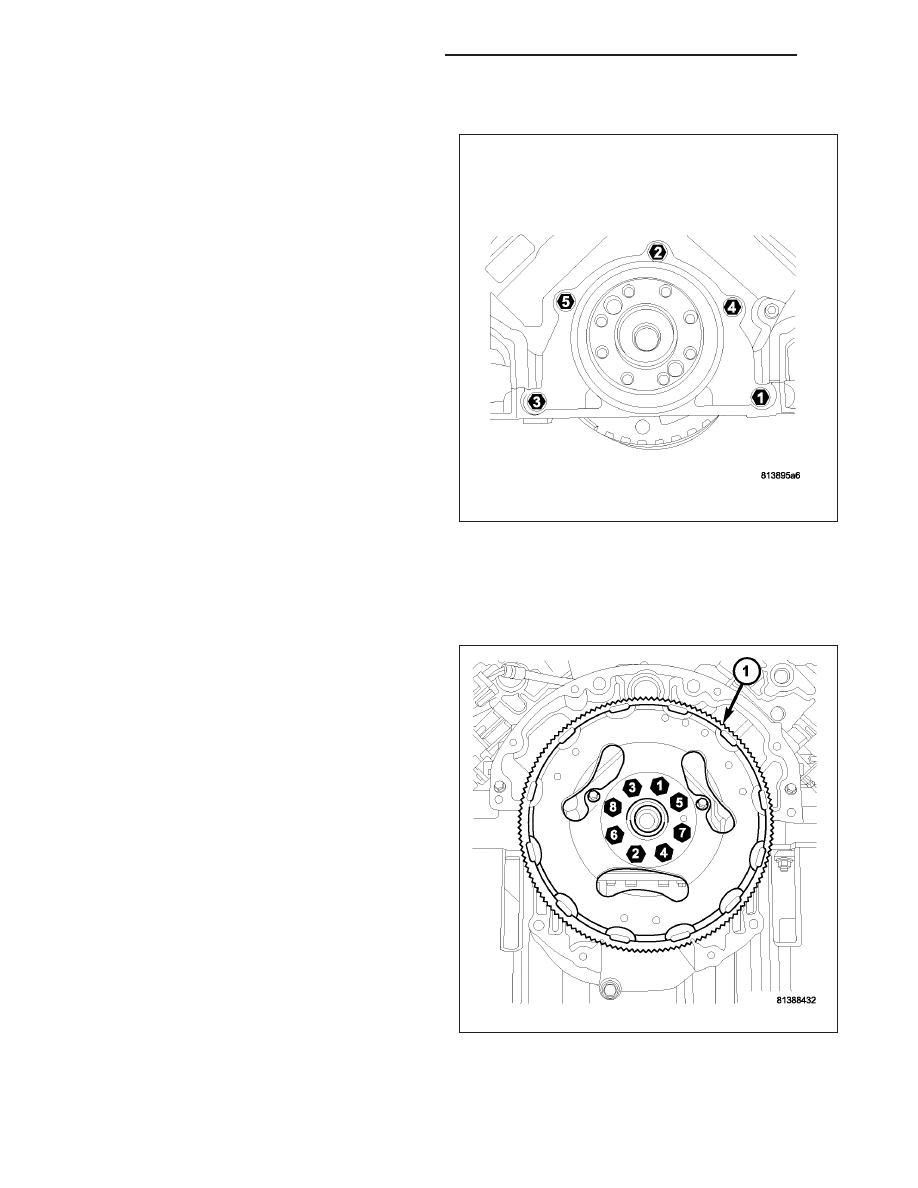Content .. 1229 1230 1231 1232 ..
Jeep Grand Cherokee WK. Manual - part 1231

INSTALLATION
1. Throughly clean all gasket resdue from the engine
block.
2. Use extream care and clean all gasket resdue from
the retainer.
3. Position the gasket onto the retainer.
4. Position the retainer onto the engine block.
5. Install the retainer mounting bolts. Tighten the bolts
to 15 N·m (132 in. lbs.) using the procedure shown.
6. Install the oil pan (Refer to 9 - ENGINE/LUBRICA-
TION/OIL PAN - INSTALLATION).
7. Install the flexplate (Refer to 9 - ENGINE/ENGINE
BLOCK/FLEX PLATE - INSTALLATION).
8. Install the transmission (Refer to 21 - TRANSMIS-
SION/TRANSAXLE/AUTOMATIC
-
NAG1
-
INSTALLATION).
9. Check and verify engine oil level.
10. Start engine and check for leaks.
FLEX PLATE
REMOVAL
1. Remove the transmission. (Refer to 21 - TRANS-
MISSION/TRANSAXLE/AUTOMATIC
-
NAG1
-
REMOVAL).
2. Remove the bolts and flexplate (1).
9 - 1520
ENGINE - 5.7L SERVICE INFORMATION
WK